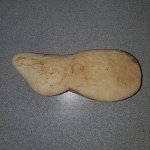Iron Buzz
Bronze Member
- Oct 12, 2016
- 1,722
- 2,347
- 🏆 Honorable Mentions:
- 1
- Detector(s) used
- XP Deus, Minelab Equinox 800
- Primary Interest:
- Metal Detecting
1864 - 1909 Indian Head Penny : 95% copper, 5% zinc, 3.11 grams
1909 - 1982 Copper Lincoln Cent : 95% copper, 5% zinc, 3.11 grams
1982 - 2014 Zinc Lincoln Cent: 97.5% zinc, 2.5% copper, 2.5 grams
So... why do those Indian Heads ring up with the same ID as a zinc penny? On my XP Deus at 18K, a copper Linc reads 90-91. An Indian Head and a Zincoln both read 85-87. Why?
1909 - 1982 Copper Lincoln Cent : 95% copper, 5% zinc, 3.11 grams
1982 - 2014 Zinc Lincoln Cent: 97.5% zinc, 2.5% copper, 2.5 grams
So... why do those Indian Heads ring up with the same ID as a zinc penny? On my XP Deus at 18K, a copper Linc reads 90-91. An Indian Head and a Zincoln both read 85-87. Why?
Amazon Forum Fav 👍
Upvote
0







